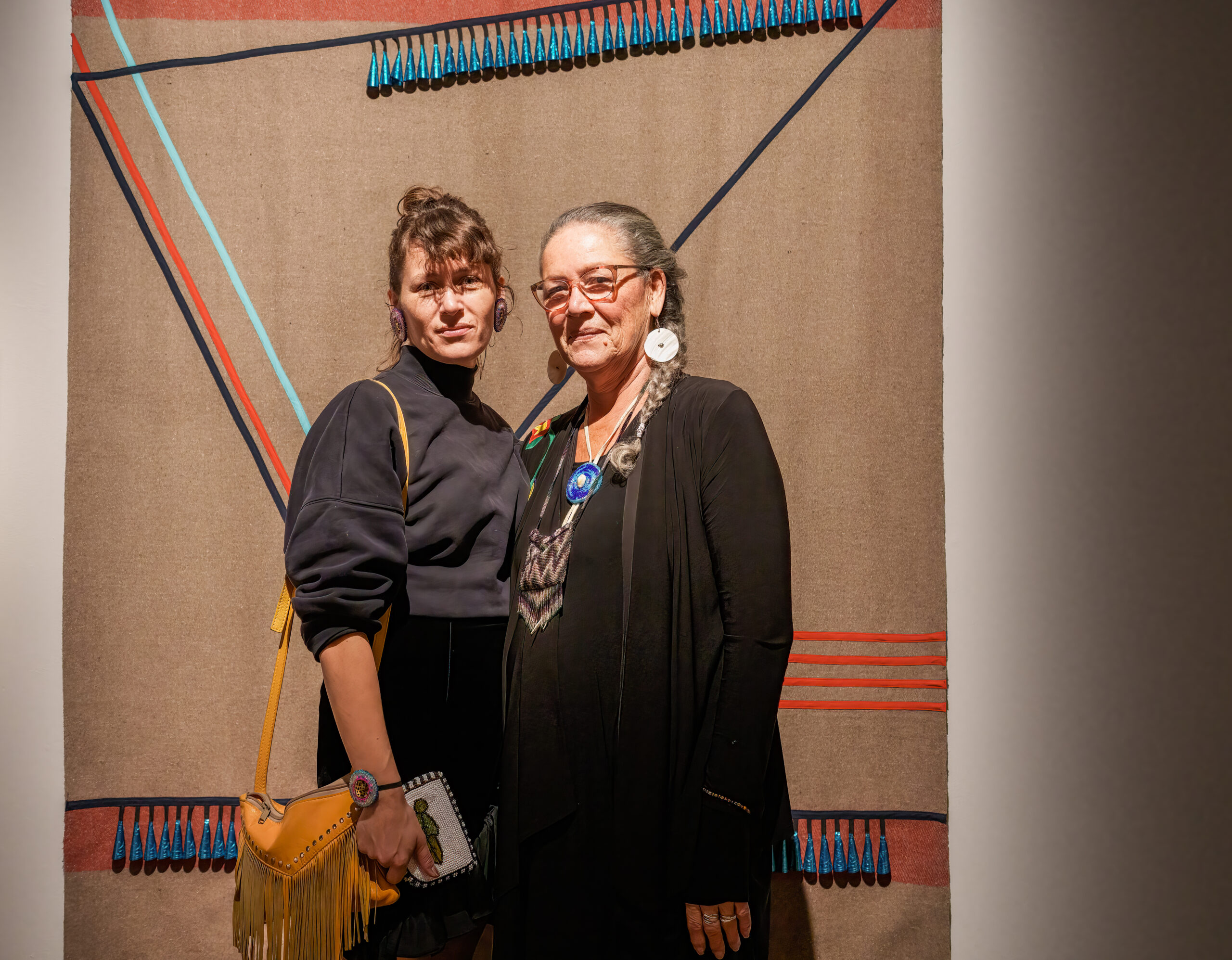Mother and daughter dig up old works to tell a story on Indigenous heritage in new MAI exhibition
Montréal, arts interculturels, or MAI for short, opened Ji zoongde’eyaang on Oct. 22. The exhibition features work from Lara Kramer and Ida Baptiste, an Anishinaabe Oji-Cree mother-daughter duo. The title, in Anishinaabemowin, means “to have a strong heart”.
Baptiste is a visual artist, traditional pow wow dancer and Ojibwa language teacher based in Rama, Ontario. She is a member of the Berens River First Nation, Treaty 5 territory. Many of her works, consisting of oil on canvas, weaving and printmaking, were famously shown between 1975 and 1990 in Ontario.
Lara Kramer, her daughter, is a performer, choreographer and artist of many disciplines from Oji-Cree and settler descent. Her work is grounded in intergenerational relations, intergenerational knowledge and the impacts of the Indian Residential Schools in Canada.
Most of the pieces in this exhibition touch on generational practices as well as experiences involving memory, loss and reclamation. Some of the works by Baptiste are from the early ’90s and have never been seen before, representing her experiences from her time at Brandon Indian Residential School in Manitoba.
Baptiste worked as an Ojibwa language teacher at Mnjikaning Kendaaswin Elementary School in Rama, Ontario from 2011 to 2019. “There’s a big language component in all of these works and it’s reflected here with the audio recording of them learning together, but the exhibition of all of these blankets actually started during the pandemic,” said MAI head of communications Jaëlle Dutremble-Rivet.
Much of Baptiste’s works consist of oil paint on canvas. Many of these paintings depict young Indigenous children superimposed over backgrounds thematically tied to residential schools.
In addition to the language component of this exhibition, Kramer and Baptiste collaborated to gather several trade blankets representative of Kramer’s memories growing up and connecting with her Oji-Cree culture. “Gorgeous Tongue,” one of the blankets on display, represents Kramer’s memories of growing up in poverty. She also touches upon sentiments of rebirth and family lineage.
“Emily” is a trade blanket that represents Kramer’s relationship to her lineage. She speaks of her “nookomis,” her mother’s mother, and the brief relationship they had. Kramer recounts witnessing her nookomis’ anguish through a series of seemingly paranormal interactions. The piece has heavy tones of generational trauma and the ways in which they shape intergenerational relationships.
The trade blanket has a lot of meaning. It was used during colonization, spreading smallpox to indigenous communities — a devastation in the genocide against Indigenous people. The blankets were also used in trade between different communities. Kramer and Baptiste are reworking and tasking that symbol, adding regalia from traditional jingle dresses and beading work.
“The paintings were an addition because at the beginning it was only supposed to be the blankets and a projection,” said Dutremble-Rivet. For instance, the painting titled #64 is a triptych of a young child on a swing set, with a background composed of different numbers.
“All of the children in residential schools were given numbers, and 64 was Ida’s number,” said Dutremble-Rivet. “There’s a lot of residential school history in Ida’s work. [Ji zoongde’eyaang] is a really important work to show, especially that it was truth and reconciliation day a month ago, so it’s the real history.”
For more information about the exhibition, please visit the MAI’s website.
